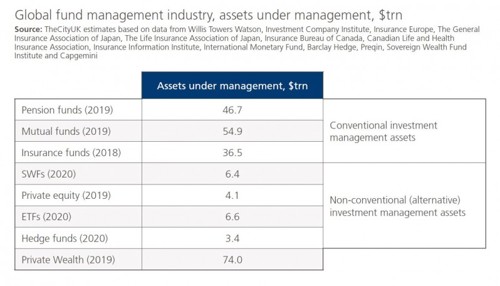Our latest economic research, produced in partnership with Clifford Chance, delves into the complex and sometimes mysterious world of state-backed assets under management.
Earlier this month we launched new economic research on a topic we hadn’t covered in several years: Sovereign Wealth Funds (SWFs). It was a particular pleasure to publish this report, because it is always among the most interesting—and most challenging—in our suite of research. There is relatively little hard data about this sector, so our contribution is not only to evaluate and bring together much of the publicly available data, but also to publish our own analysis and estimates of some of the key metrics around these funds.
As for the funds themselves, this relative opaqueness, combined with the fact that many SWFs are in countries perceived as being fabulously wealthy—think Norway, Saudi Arabia or the UAE—means that SWFs still hold a certain amount of intrigue. More prosaically, they are a sub-set of the wider fund management industry. The table below puts the sector in context, showing that although SWF assets under management (AUM) are dwarfed by conventional AUM (those of mutual funds, pension funds and insurance funds), they are now larger than AUM of private equity and hedge funds.

One of the points our research emphasises is that SWF investment goals tend to make these funds sources of patient capital. Stabilisation SWFs, which are used by countries endowed with natural resources to mitigate domestic economic fluctuations triggered by commodity-price swings, may have shorter-term investment horizons in order to take into account possible shorter-term national liquidity or financing needs. Other SWFs, however, typically adopt a long-term approach to investing. SWFs have considerable freedom in their asset-allocation decisions and are usually not confined to certain asset classes or currency exposures, as some institutional investment managers, such as pension funds, may be.
This means that SWFs can continue to play a positive role, alongside other long-term investors such as insurers and pension funds, to contribute to things like infrastructure financing. This includes traditional infrastructure investment but also newer areas like renewable energy and green infrastructure more broadly. For example, according to data from Preqin, SWFs’ investment into green assets increased to $11bn between 2015 and 2017—although it should be noted that this still represents less than 0.2% of the sector’s total assets, and only 6% of total SWF direct investments in that period.[1] A very recent example was Norway’s Government Pension Fund Global (GPFG) taking a $1.6bn direct stake in a Danish-owned and -run wind farm in April 2021.
Moreover, some SWFs are divesting their oil- and gas-related holdings; in some cases, this is somewhat paradoxical given that many SWFs are themselves funded by surpluses generated from hydrocarbon-based export revenues. The most prominent example is GPFG—the world’s largest SWF, with $1.3trn in AUM—which is funded predominantly from oil-export revenues but which in 2019 announced that it would divest its holdings in companies focused on oil exploration and production (it has maintained investment in oil and gas companies that have renewable energy divisions).
These investment decisions are likely driven by a mix of portfolio diversification, desire for strong returns, and social or ethical considerations—the precise balance of which is more or less impossible to disentangle.[2] Regardless of the means and motivation, the end result—more capital invested in forward-looking companies and sectors—points to the likelihood that SWFs are an important global investor class that can help tackle important global challenges, such as climate change.
[1] https://www.pwc.co.uk/industries/assets/prequin-special-report-august-2018.pdf
[2] For more detail on green infrastructure investment, see TheCityUK and Imperial College Business School, ‘Financing low-carbon infrastructure’, November 2019, available here

